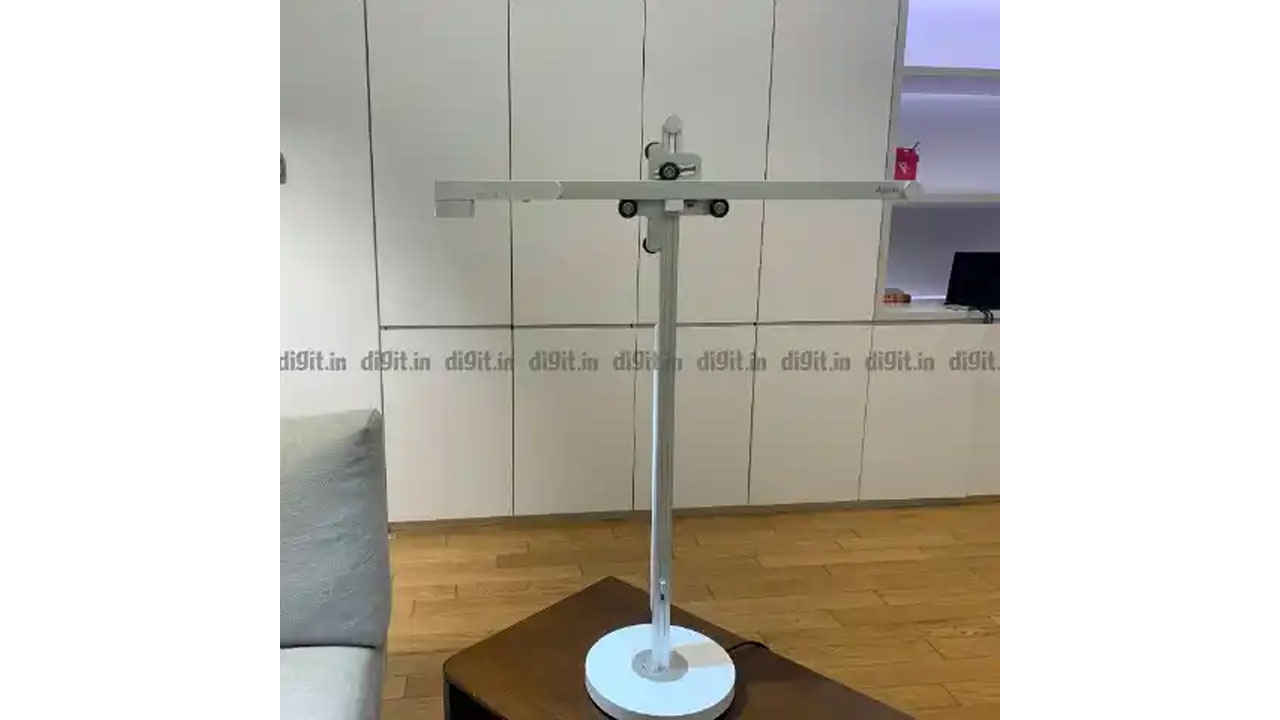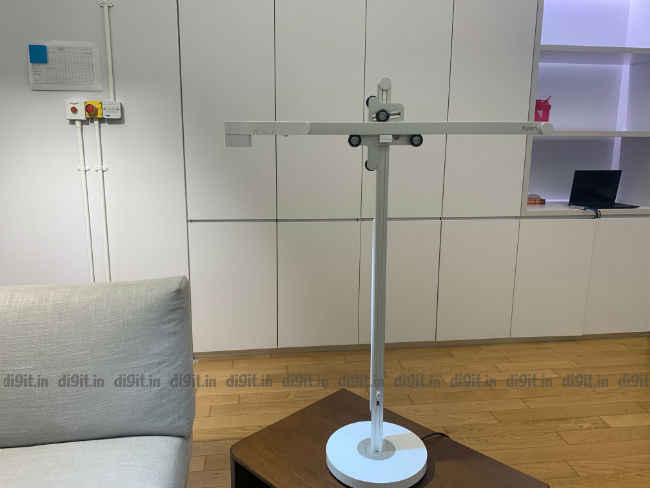Dyson Lightcycle first impressions: A creator’s best friend?

The Dyson Lightcycle is an LED task light that can adjust the brightness and colour temperature according to the time of day. Its 360-degree rotatable and slidable design makes it very attractive for creators.
Smart lighting as an industry is on the rise. Both hardware and software makers operating in the smart lighting space are projected to bring in a market value upwards of $20 billion by 2023. Stepping into this bright future, Dyson has launched its Lightcycle in India, an LED task light that costs Rs 39,900.
Now, you may think that Rs 39K is too much to pay for a light, and it does hold true for the price conscious Indian consumer, but with its ingenuity, the Dyson Lightcycle is a truly impressive product. I had a chance to spend some time understanding and using the features of the Lightcycle and here’s what I thought of it at first impressions.
Build and Design
You haven’t seen anything quite like the Lightcycle. Simply put, I would call it the iPhone of smart lighting, because the design not only lends to its usability, but also adds to its urban aesthetic. The Lightcycle has a sleek aluminium frame that can be pulled up or down to suit a user’s lighting requirements. The entire frame can also glide back and forth as well as rotate 360 degrees, giving users that much needed flexibility. This, I feel, is something creators would appreciate very much.
Since longevity is key to the Lightcycle, it features a copper tube stretching from the LED enclosure to the end of the long upper stem in order to facilitate cooling. A droplet of water travels from one end of the copper tube to the end with the LED bulbs, where it evaporates. It then travels back along the tube, condensing and dissipating heat along the pipe, before returning to the LEDs by capillary action. Owing to this framework, the company claims that the Lightcycle’s LEDs can last up to a whopping 60 years.
What’s great is that users can literally see the copper tube affixed on top of the frame, and the design is such that it lends to the modern appeal of the Lightcycle.
The company provides a two-year warranty on the aluminum frame and a lifetime on the LEDs, but like any other gadget, the frame of the Lightcycle could break if mishandled by children or misused by anyone else. That said, I am not saying it is delicate, I am just saying, and a Dyson engineer concurred with me, that the product is not unbreakable.
Features and Functionality
The Dyson Lightcycle has a brightness range that stretches from 100 to over 1,000 Lux, while colour adjusts from a warm and yellow 2,700 Kelvin to a cool, white 6,500 Kelvin in Boost mode. I can imagine an artist using the Lightcycle for uniform lighting while painting or an engineer putting the light in boost mode to clearly put together complicated prototypes. The Lightspeed allows for precision, something creators and makers crave when they are working with colours, tools and such.
There are three buttons on the Lightcycle at the bottom, that allow users to put it in auto mode, in daylight tracking mode, and in ambient mode. A proximity sensor is nestled next to the three buttons. On top of the light, there are touch controls to increase/decrease brightness and colour temperature manually. The power button is also touch sensitive.
Besides using the controls on the light, users can also alter its settings and trigger functionality through the Dyson Link app. Here, one can select from a range of pre-set modes such as Study, Relax, Precision, Boost, Wake-up, Sleep and Away. There’s an option to build customised modes as well in the app. Doing this is pretty straightforward and the app has a self-explanatory UI.
To use the Daylight tracking mode, one needs to set their location after pairing with the Lightcycle, which then tracks the position of the sun throughout the day to adjust lighting temperatures and intensity. What I appreciated was that the app does not need to read location data constantly in order to do so and once the location of the Lightcycle is set, location permissions for the app can be revoked by users to avoid unneccessary tracking. The Lightcycle features 3 warm and 3 cool LEDs that simulate daylight colour temperatures from 2,700-6,500 Kelvin.
When the room is devoid of sunlight, the ambient light sensors come into play and adjust the lighting according to the room’s environment.
Pulling the light up and down gets the proximity sensor in play to adjust intensity. However, when I tried this personally, the proximity sensor would not function as desired. A Dyson engineer then told me that for this to work as intended, the proximity sensor needs to have a plain surface below it, for instance a desk or a table. Only then does it know how to change the light’s intensity when it’s pulled closer or put further away.
Dyson also claims that the Lightcycle has a very low optical flicker and glare protection, so it does not strain the eyes of the user. The company uses a heptagonal reflector split by a layer of PMMA diffusion film for diffusing light. At first impressions, the lighting was indeed extremely uniform and precise, creating high quality shadows.
The Lightcycle comes in two variants, one is a desk lamp and another is a floor lamp. In India though, the desk version of the device is being made available.
At first impressions, Lightcycle is something everyone would want next to their bedside, on their desks at office, or on their garage workbench. But given its premium pricing, it would be one of those gadgets regular joes have to save up for and buy. For those who can afford Lightcycle, it is a no brainer, but hang on for our in-depth review so we can tell you more about the device and how it functions in the long term.









